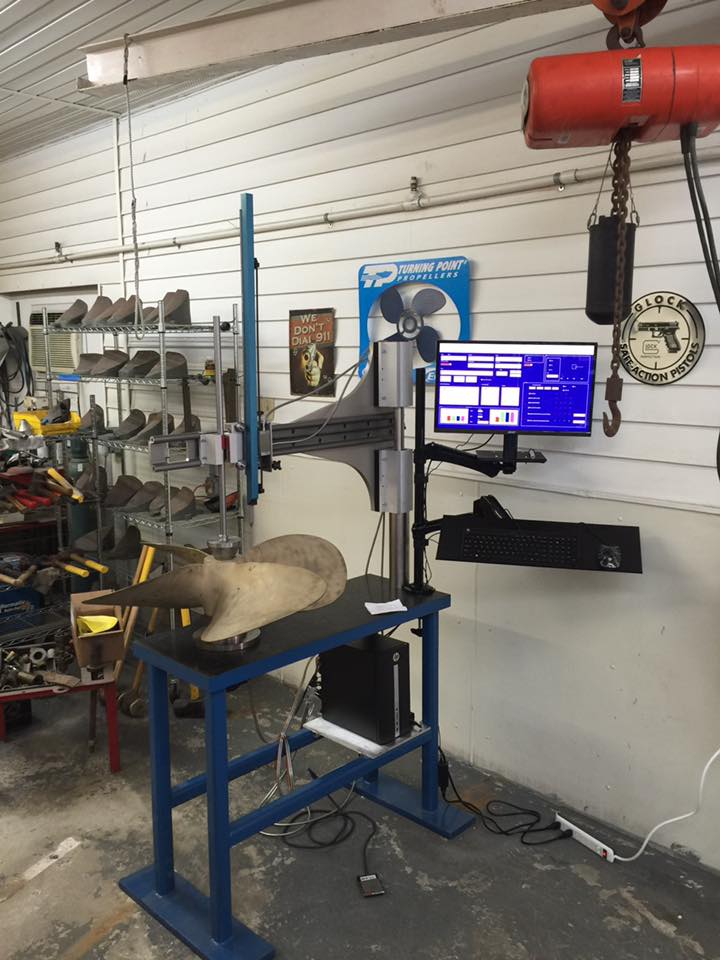
8 mpg because the boat is trying to break over its bow waves and get on plane, but can’t do it at 2500 rpm. Working our way up the power curve, at 10 mph, the efficiency of the stock propellers drops to. The international maritime agency ICOMIA estimates that a boat spends 40% of its duty cycle running at idle, so this could be important over time. Taking a look at some other numbers, at idle, the Sharrow props were 24% more fuel-efficient. Our results showed that the Sharrow props can run 36% farther on a gallon of gas. For anglers heading out to the canyons, that’s worth a closer look. Our test boat's range also increased to 368 statute miles, which is 86 miles farther than the stock setup. That translated to 1.5 mpg for the Sharrows compared to 1.1 mpg with the stock props, a 36% advantage. With the conventional wheels, the boat burned 21.1 gph, but with the Sharrows, that number dropped to 14.8 gph. The biggest difference was the fuel consumption. Looking at the results, the Sharrows’ most economical rpm was 1000 revs lower than the stock propellers and the boat ran 2.1 mph slower. This gave her a range of 368 statute miles with the same 10% of the boat’s fuel capacity held in reserve. With the Sharrow props, which were designed specifically for our test boat, we found the 325 DC’s best range at 3000 rpm where she ran 21.7 mph, burned 14.8 gph and wrung 1.5 miles out of a gallon of gas. We hauled the boat quickly, swapped the props and headed right back out with the same amount of fuel, which ensured that we tested in the same conditions. On the other hand the Sharrow prop advanced from a low of 7.44” (18.9 cm) to a high of 10.05” (25.53 cm) with its 14.5” (36.83 cm) x 11” (27.94 cm) 3-blade prop. The result of the cavitation was that the advance rate of the 17” (43.18 cm) diameter x 12” (30.48 cm) pitch 5-blade conventional prop advanced only 7.40” (18.8 cm) to 8.22” (20.88 cm) with every 360-degree rotation of the prop.

But, because the OXE diesel does not exhaust through the prop hub, for the first time we could see the cavitation of a conventional 5-blade prop. As a result, our test captains could never determine how much of the frothy bubbles emanating from the whirling prop was exhaust and how much was cavitation.


Virtually all gasoline outboards we have tested have ‘through-the-hub” exhaust. Many charter fleets around the world are turning to diesel-powered cats, which means they will have the same downtime threats that the owner of the boat we tested faced - and that’s why he turned to outboard diesels. (18,181 kgs.) powered by inboard diesels, both straight shaft and pod-driven, indicates that 300-hp diesel outboard engines equipped with Sharrow props are likely to be significantly more fuel efficient. Other Diesel/Sharrow Prop ApplicationsĪ cursory look at other catamarans of about 40,000 lbs. We ran her with custom Sharrow props and conventional 5-blade wheels made by one of America’s best outboard prop manufacturers. This was a particularly important test because there are now two brands of outboards being made for heavy-duty commercial, military, police and heavy recreational boat applications. Recently, BoatTEST evaluated a 57’ (17.37 m) catamaran, Voodoo, powered by a pair of 300-hp OXE diesel outboard engines. Sharrow Props 46% More Fuel Efficient at 18 Knots on 300-hp Diesel Engines


 0 kommentar(er)
0 kommentar(er)
